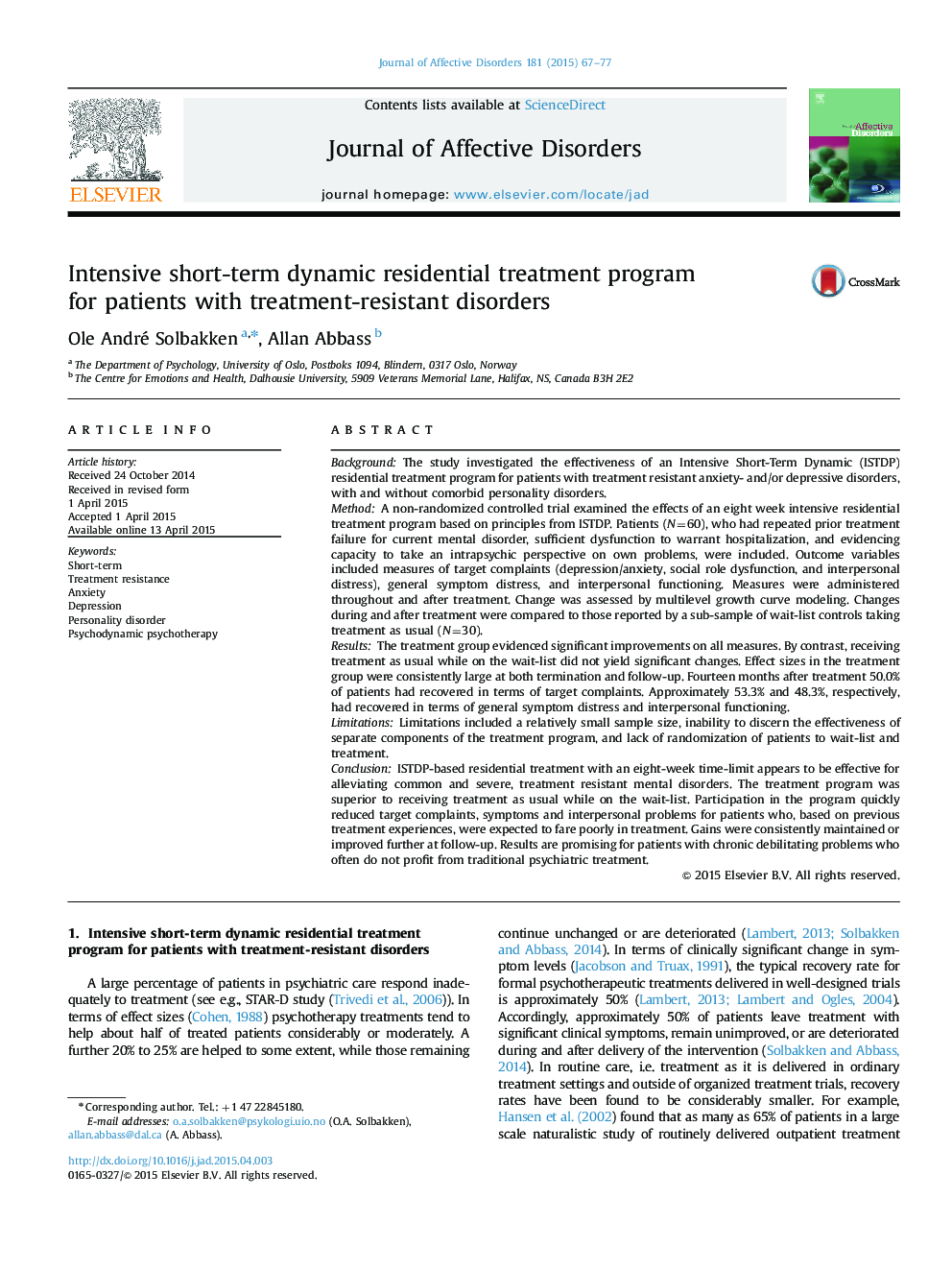| کد مقاله | کد نشریه | سال انتشار | مقاله انگلیسی | نسخه تمام متن |
|---|---|---|---|---|
| 4185889 | 1608144 | 2015 | 11 صفحه PDF | دانلود رایگان |
• Patients (N=60)with repeated prior treatment failure, underwent an eight week intensive residential treatment program based on Intensive Short-Term Dynamic Psychotherapy (ISTDP).
• Effects of treatment were compared to those of controls (N=30) receiving treatment as usual while on wait-list.
• Outcome variables included overall levels of target complaints, general symptom distress, and overall interpersonal functioning.
• Measures were administered repeatedly during and after treatment and analyzed by multilevel growth curve modeling.
• Fourteen months after treatment50.0% of patients had recovered in terms ofof target complaints. 53.3% and 48.3%, respectively, had recovered in terms of general symptom distress and overall interpersonal functioning. By contrast changes in the wait-list condition were small or non-existent.
• ISTDP-based residential treatmentappears to be effective for alleviating common and severe, treatment resistant mental disorders.
BackgroundThe study investigated the effectiveness of an Intensive Short-Term Dynamic (ISTDP) residential treatment program for patients with treatment resistant anxiety- and/or depressive disorders, with and without comorbid personality disorders.MethodA non-randomized controlled trial examined the effects of an eight week intensive residential treatment program based on principles from ISTDP. Patients (N=60), who had repeated prior treatment failure for current mental disorder, sufficient dysfunction to warrant hospitalization, and evidencing capacity to take an intrapsychic perspective on own problems, were included. Outcome variables included measures of target complaints (depression/anxiety, social role dysfunction, and interpersonal distress), general symptom distress, and interpersonal functioning. Measures were administered throughout and after treatment. Change was assessed by multilevel growth curve modeling. Changes during and after treatment were compared to those reported by a sub-sample of wait-list controls taking treatment as usual (N=30).ResultsThe treatment group evidenced significant improvements on all measures. By contrast, receiving treatment as usual while on the wait-list did not yield significant changes. Effect sizes in the treatment group were consistently large at both termination and follow-up. Fourteen months after treatment 50.0% of patients had recovered in terms of target complaints. Approximately 53.3% and 48.3%, respectively, had recovered in terms of general symptom distress and interpersonal functioning.LimitationsLimitations included a relatively small sample size, inability to discern the effectiveness of separate components of the treatment program, and lack of randomization of patients to wait-list and treatment.ConclusionISTDP-based residential treatment with an eight-week time-limit appears to be effective for alleviating common and severe, treatment resistant mental disorders. The treatment program was superior to receiving treatment as usual while on the wait-list. Participation in the program quickly reduced target complaints, symptoms and interpersonal problems for patients who, based on previous treatment experiences, were expected to fare poorly in treatment. Gains were consistently maintained or improved further at follow-up. Results are promising for patients with chronic debilitating problems who often do not profit from traditional psychiatric treatment.
Journal: Journal of Affective Disorders - Volume 181, 1 August 2015, Pages 67–77
